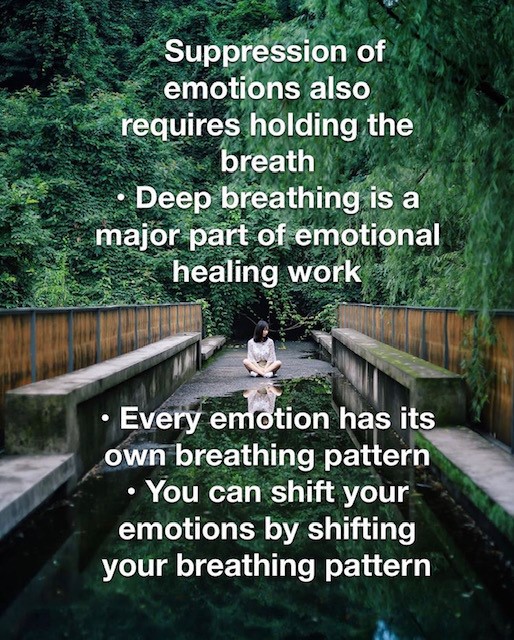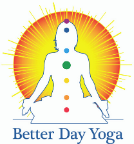
Hello everyone!
Hope you are all staying safe and healthy during this time! Spring is blooming in our neighborhood. How about yours?
This month I had the absolute honor and privilege to be a guest blogger for my colleague, Dani, at MyThryoidLove.com (She has since moved on from that site as I update this in 2023. She was done with the topic after some time at it). She asked me to write about yoga for healing trauma. I’m sharing that blog with you in this month’s newsletter! Thank you for being here!
Yoga as a healing system
You’ve probably all heard about the benefits of yoga, right? There has been a huge boom (more than 50%) in those doing yoga over the past few years. If you haven’t tried yoga, surveys show you’re probably strongly considering it!
I started my yoga teacher trainings back in 2006 with YogaFit. My first teacher training in the “YogaFit for Warriors” 140-hour program (trauma-informed yoga program) was in 2014.
When I first started learning about the healing benefits of yoga for trauma in particular, I remember thinking “this will be a nice addition”. What I didn’t realize was how many light bulbs would go off and how many unanswered questions from my childhood the trainings would answer.
You see, my parents were prisoners of war during World War II, met in a displaced person’s camp after the war, were married and had two children in that camp before being allowed to leave. The YogaFit for Warriors program helped me realize that my parents didn’t just have short tempers. They had undiagnosed Post-Traumatic Stress. Ours was a volatile household.
My trauma-informed training gave me the answers to why my parent’s had short fuses. They had absolutely no control over the triggers that set things off. Their nervous systems had been burnt out. Their feedback loops were no longer functioning the way they were meant to. Their PTSD symptoms were perfectly normal reactions to perfectly abnormal events from their past. I no longer felt alone in my history. There’s solace and healing in that knowing.
I didn’t know until this program that childhood trauma predisposes one to auto-immune conditions according to the Adverse Childhood Experiences (ACEs) Study. I had Rheumatoid Arthritis as a child, which I outgrew; and was diagnosed with hypothyroid disorder as an adult in my 30’s. I was unaware it was the auto-immune version of hypothyroid, Hashimotos Hypothryoidism, until several years later under a new doctor’s care. I’m also gluten-sensitive.
Potentially 25% of students in any yoga class have trauma in their history. (Source: CDC.gov)
“A common denominator of all traumas is an alienation and disconnection from the body and a reduced capacity to be present in the here and now.” ~ Peter Levine, PhD.
When the Covid-19 virus started, one of the first things I did as someone who has autoimmune issues was Google whether that predisposes me to getting the virus more easily. I was happy to find and confirm with my doctor I really wasn’t any more predisposed than anyone else.
However, I later read an excellent article on stress and the endocrine system that gave me reason to pause. A history of trauma can not only predispose you to an autoimmune condition, it can also predispose you to an overactive stress response.
Now stress DOES lower immunity, so in this current environment, take care of you.
In both trauma and stress, the body keeps score; the brain rewires itself around the traumatic event and memories get stored in the tissues throughout the whole body. Yoga can help to free those memories, alleviating troubling emotions, perseverating thought patterns as well as chronic somatic tension and hyper vigilance.
“Cultivating sensory awareness is a critical aspect of trauma recovery. In yoga you focus your attention on your breathing and on your sensations moment to moment. You begin to notice the connection between your emotions and your body. You begin to experiment with changing the way you feel. Will taking a deep breath relieve that tension in your shoulder? Once you start approaching your body with curiosity rather than fear, everything shifts. ”
~ Bessel Van Der Kolk, M.D.
Yoga is a somatic treatment that helps reset the nervous system and helps trauma sufferers reconnect with their bodies and regain a sense of control. I will say that when I’m coming unraveled, yoga is my way of regaining “control”.
The daily practice of yoga asana as well as the mind/body practices yoga brings to my life (deep breathing, meditation, contemplation and paying attention to all body sensation—be they physical, mental or emotional, for example)—help me navigate the more stressful moments, keeping my nervous system from overreacting to a stressor. My constant repetition to my students in class to “start with the breath” and “let’s reconnect with the breath” has become a silent mantra in my head. It’s in the actual practice of the tools that the tools become remembered and thus available for use when the situation presents itself.
Yoga is a “meditation in motion” bringing you to the present moment. This sense of presence is part of the healing process yoga offers. “I’m okay right now” is one of my favorite mantras. It’s in the “now” that you are able to know you are okay and it’s in this knowing that healing happens.
Slower mindful movement awakens the emotional or limbic center of the mind. Physical focus on the psoas (the fight or flight muscle) and grounding postures help release the allostatic load (wear and tear) of traumas stored in the body.
Our nervous system likes to know what to expect. This keeps us calm and centered. This keeps us in the parasympathetic side of our nervous system. This is where rejuvenation happens. As mentioned early, my daily practice lets my nervous system know I’m entering the sacred space of my yoga mat. “This I do for me” is another mantra I offer. The more you learn to give yourself moments of self-care, the more your body begins to trust it really is okay.
Coming to yoga is a ritual of sorts. You’re among friends. The class structure is predictable and the repetitive motion along with the breath is soothing. This repetitive motion (sun salutations for example) takes us into the alpha brain wave state where we’re more relaxed and open to affirmations and positive suggestions. This is why the final relaxation meditation is so important. Meditation and imagery are used to balance the mind and body, creating a buffer of positive emotions.
When we’re stressed our sympathetic side of the nervous system comes on board and parts of our brain and other functions of the body (like digestion) are put on hold. You don’t need food when you’re running from danger!
Breath practices, like alternate nostril breathing, integrates left and right sides of the brain bringing calm if you’re anxious and upliftment if you’re depressed. There are many breath practices available in yoga. Ocean-sounding breath, for example (Ujjayi), creates a soothing white-noise sound of your breath bringing calmness, settling your mind.
Soothing/parasympathetic nervous system activating types of breathing practices stimulate the vagus nerve. The vagus nerve stretches from the brainstem all the way into the belly, carrying incoming information from the nervous system to the brain. Literally the mind-body connection, it’s the cabling behind your “gut instincts”, governing things like the heart rate, digestion, sweating and skeletal muscles.
Trauma victims can feel helpless, overwhelmed, and powerless. One of the important aspects of trauma-informed yoga is continually communicating in a positive way, not demanding. My YogaFit training incorporates the YogaFit Essence: “breathing, feeling, listening to your body, letting go of competition, expectations, judgments, and staying present.” This positive communication technique is referred to as YogaFit’s Transformational Language.
The student is empowered to be in charge of their body at all times. They’re instructed to always listen to their body and move into any position based upon how they’re feeling in the moment. This fosters a safe, nurturing environment. This invites the student back into their bodies, not forcefully or demanding because only they can know when and where to feel more in the pose. If pushed too far, too fast, we can actually trigger the fight or flight mode.
Neuroplasticity shows how yoga creates a neurological/chemical resiliency so that people can tolerate memories—Yoga literally changes how we think, what we do and what we say! We can all benefit from this type of practice!
I am still someone with Hashimotos Hypothyroid disease but I can honestly say that my symptoms would be much worse if I didn’t live a more yogic way of life. Am I perfect at that? Definitely not! Am I healed? No, I can’t say that either. As mentioned earlier, my history predisposes me to an overactive stress response. Through my trauma-informed training I have acquired much needed answers to why as well as much beloved practices to soothe that stress response. It makes my journey through this great big beautiful world that much smoother! And for this I am eternally grateful!

Namasté,
Sandy Krzyzanowski
Better Day Yoga, LLC
~
Mail to: 5024 Oxborough Gardens
Brooklyn Park, MN 55443-3990
(612) 708 6900
Free Giveaway on my newly upgraded website! 21 days to optimizing your innate energetic potential!
Description: Using various segments from my archived newsletters I provide a dedicated 21 days of easy to do practices, meditations, diet/food recipes and suggestions plus other fun topics to follow along as you get to know your energetic/chakra system! This piece will explain what your seven basic chakras are, why they’re important, and how to work with them to bring balance. (Go here and then scroll down to the bottom past the “Kind Words” section to enter your email address.)
Zoom, zoom zoom!
I’ve converted all of my private classes onto Zoom during this unusual time and plan to stay that way for the unforeseen future, given social distancing requirements, the age of many of my students, etc. I am considering adding a Thursday Zoom yoga class at 1:00 PM. The three person minimum would still hold. What are your thoughts? Do you have a couple of friends who’d be interested in meeting with you in a Zoom class? Let’s discuss!
Six Weeks to Inner Resilience
Also, check out my new workshop—which could easily be converted to Zoom if you have a group that’s interested:
Six Weeks to Inner Resilience!
New skincare link on my website!
Sister Moon Herbals
Organic Wild Crafted Earth Medicine. I met Heidi, the owner of Sister Moon Herbals, during my Ayurveda Practitioner training. When I decided to try her products, I started with the Rose & Coconut Oil Moisturizing Cream to help with the brutal Minnesota winters! I was not disappointed! This cream is so luxuriously emollient! Normally my skin feels quite dry and taut in the winter but not with this cream! I was also able to use it under my make-up! It doubles as a daytime and nighttime moisturizer and now I won’t be without it!

